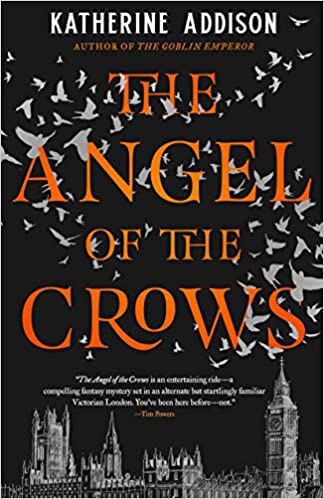 The Angel of the Crows by Katherine Addison
The Angel of the Crows by Katherine Addison Format: eARC
Source: supplied by publisher via NetGalley
Formats available: hardcover, ebook, audiobook
Genres: gaslamp, historical fiction, historical mystery, steampunk, urban fantasy
Pages: 448
Published by Tor Books on June 23, 2020
Purchasing Info: Author's Website, Publisher's Website, Amazon, Barnes & Noble, Kobo, Bookshop.org
Goodreads
This is not the story you think it is. These are not the characters you think they are. This is not the book you are expecting.
In an alternate 1880s London, angels inhabit every public building, and vampires and werewolves walk the streets with human beings under a well-regulated truce. A fantastic utopia, except for a few things: Angels can Fall, and that Fall is like a nuclear bomb in both the physical and metaphysical worlds. And human beings remain human, with all their kindness and greed and passions and murderous intent.
Jack the Ripper stalks the streets of this London too. But this London has an Angel. The Angel of the Crows.
My Review:
The Angel of the Crows is the second book by Katherine Addison, after her completely, totally, utterly awesomesauce The Goblin Emperor. And this second book is nothing like the first book – except that both are terrific.
But they are terrific in completely different ways. Goblin Emperor was a political thriller of epic fantasy, featuring assassination plots, deliberately mislaid heirs and a young man’s desperate attempt to learn how to rule a kingdom he was never supposed to inherit. It’s marvelous and thrilling and fantastic.
The Angel of the Crows, very much on the other hand, is urban fantasy, with several fantastic twists. This is steampunk and gaslamp and a bit of supernatural horror set in an alternate version of Victorian London where vampires have a pact with the Queen, werewolves are both legal and respectable, and every old building has its very own Angel to watch over the flock of humans that inhabit their domiciles.
It’s also a world where Dr. J.H. Doyle of the (British) Imperial Armed Forces Medical Service was wounded in Afghanistan in a war where the opposing forces were led by the Fallen. Fallen Angels, that is. A wound that has left him with a painful limp and a desperate need to turn into a hellhound every night.
A world where the self-styled Angel of London, an Angel called Crow so often he became one, solves mysteries that the police find too difficult to master. Including a series of bloody murders in Whitechapel.
The blurb turns out to be both right and wrong. Because these are not the characters the reader thinks they are. Yet they so very much are. And it’s surprising and wonderful from beginning to end.
Escape Rating A: In spite of the author’s claim, and the many, many differences between this world and the world we know, calling The Angel of the Crows a Holmes pastiche is right on the money.
But it’s the kind of Holmes pastiche that combines Neil Gaiman’s A Study in Emerald (collected in the author’s Fragile Things among other places) with Lyndsay Faye’s Dust and Shadow. By that I mean that this alternate world is invested – or infested – with a high quotient of the supernatural, but that this variation includes the detective and his friend desperate to solve the Whitechapel Murders. As they would have been if they had existed in real life, but that Conan Doyle probably couldn’t touch with the proverbial barge pole as that crime spree was probably too close to recent memory to be a fit subject for fictional crime-solving. But Holmes and Watson were operating at the same time as “the Ripper” and more than enough time has passed for historical mystery writers to have a field day looking into their investigation, as is the case in Dust and Shadow.
This variation is also genderbent and genderfluid in ways that fit within the world the author has created, and yet come as a complete surprise to the reader. Dr. J.H. Doyle reveals himself to be Joanna Henrietta Doyle when Miss Mary Morstan crosses his path. That Doyle has managed to not merely continue to live as a man but actually blackmailed the I.A.F. into allowing him to keep both his medical license AND his army pension turns out to be quite the story.
And ALL the angels are female – at least as much as celestial beings have gender. But humans have assumed them to be male, so that’s how they’re addressed and perceived. Only Doyle knows the truth of just how Crow managed to keep himself from becoming either Fallen or Nameless – as he so definitely should have.
(I continue to refer to Crow and Doyle as “he” because that is how they refer to themselves and to each other. They seem to have decided on their preferred pronouns, and I comply with their preferred form of address.)
The story of this book is a combination of many of the most famous cases in the original Holmes canon, notably A Study in Scarlet, The Sign of Four and The Hound of the Baskervilles, among MANY others, with their continued investigation into the Whitechapel Murders. While it is inordinately fun to spot the differences between the original version of those famous cases and this one, it is not required to be familiar with the Holmes stories to enjoy these versions. But if you are, the mystery that needs to be solved is often a bit anticlimactic as the resolutions aren’t generally THAT different. Even though James Moriarty turns out to be a vampire.
However, their exploration of how this version of the world works is fascinating, and their constant – and constantly frustrating – attempts to figure out who is – or who are – committing the Whitechapel Murders AND the Thames Torso Murders is definitely a new piece of both that puzzle and theirs.
The Angel of the Crows straddles, or perhaps that should be hovers over, a whole bunch of different genres. There’s historical mystery mixed with alternate history leavened with urban fantasy which includes more than a touch of the supernatural. And if any or all of that appeals to you as much as it does to me, The Angel of the Crows will sweep you away.

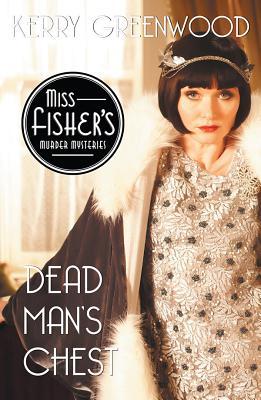 Dead Man's Chest (Phryne Fisher, #18) by
Dead Man's Chest (Phryne Fisher, #18) by 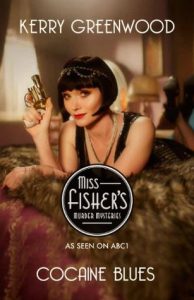 Escape Rating A-: Just like yesterday, this was simply a case of the right book at the right time. I was looking for comfort reads so dipped into two series that I know will reliably pull me into their worlds and out of my own with a sigh of relief.
Escape Rating A-: Just like yesterday, this was simply a case of the right book at the right time. I was looking for comfort reads so dipped into two series that I know will reliably pull me into their worlds and out of my own with a sigh of relief. The Woman in the Green Dress by
The Woman in the Green Dress by 
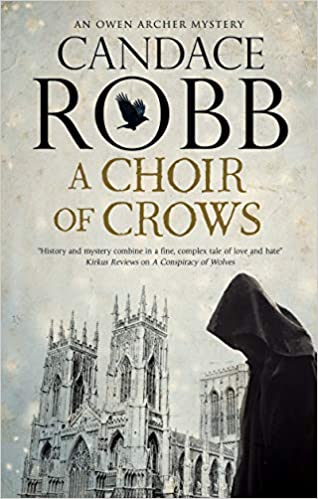 A Choir of Crows (Owen Archer, #12) by
A Choir of Crows (Owen Archer, #12) by 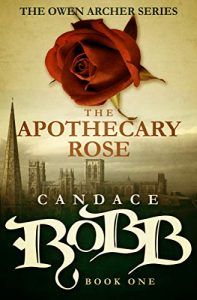 There is a vacuum in authority, but a desperate need to put the entire situation behind them before the archbishop and his party – particularly his powerful brother – arrive on the scene to force a solution. One that suits them rather than any truth.
There is a vacuum in authority, but a desperate need to put the entire situation behind them before the archbishop and his party – particularly his powerful brother – arrive on the scene to force a solution. One that suits them rather than any truth.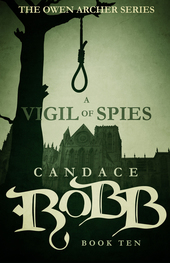 The young woman at the heart of this mystery is a victim every bit as much – actually as it turns out quite a bit more – than the man who was murdered. But she’s all too aware that even though none of what happened is in any way her fault, she’ll still be blamed for all of it merely because she is female. And that hasn’t changed much either.
The young woman at the heart of this mystery is a victim every bit as much – actually as it turns out quite a bit more – than the man who was murdered. But she’s all too aware that even though none of what happened is in any way her fault, she’ll still be blamed for all of it merely because she is female. And that hasn’t changed much either.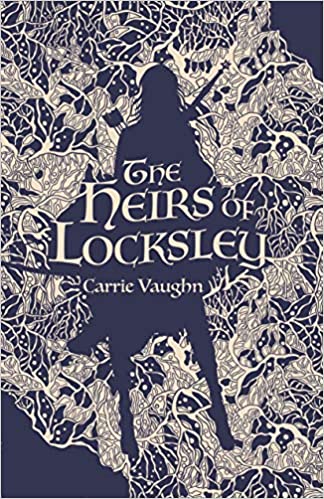 The Heirs of Locksley (The Robin Hood Stories, #2) by
The Heirs of Locksley (The Robin Hood Stories, #2) by 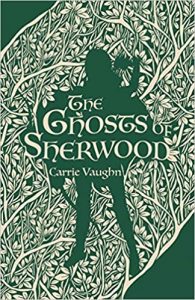 They also do a good job of giving bits of long-ago English history a face that makes them still feel relevant. The first book,
They also do a good job of giving bits of long-ago English history a face that makes them still feel relevant. The first book, 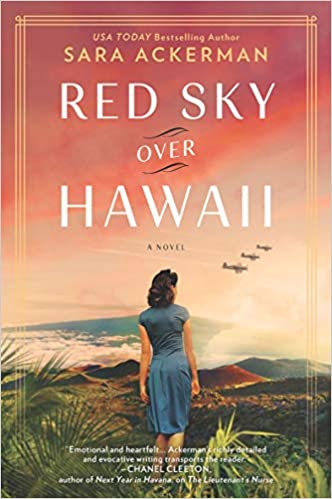 Red Sky Over Hawaii by
Red Sky Over Hawaii by 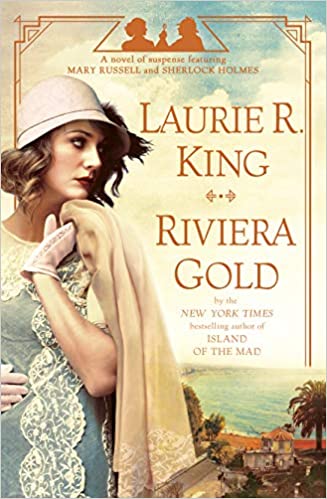 Riviera Gold (Mary Russell and Sherlock Holmes, #16) by
Riviera Gold (Mary Russell and Sherlock Holmes, #16) by 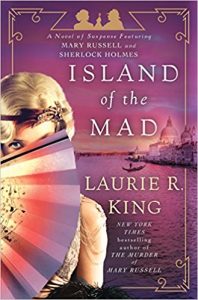 I wish that Mary Russell and Phryne Fisher could meet – they are, after all, contemporaries. If it ever happens, I’d very much like to be a fly on that wall. They feel very much like sisters under the skin, so any meeting between them would be explosive. Possibly literally. I would say that I wanted to witness a meeting between Russell and Lord Peter Wimsey, as this is also his era and the world that Russell inhabits, particularly in this story, is also his. But that meeting already occurred, somewhat surreptitiously in multiple senses of the word, in
I wish that Mary Russell and Phryne Fisher could meet – they are, after all, contemporaries. If it ever happens, I’d very much like to be a fly on that wall. They feel very much like sisters under the skin, so any meeting between them would be explosive. Possibly literally. I would say that I wanted to witness a meeting between Russell and Lord Peter Wimsey, as this is also his era and the world that Russell inhabits, particularly in this story, is also his. But that meeting already occurred, somewhat surreptitiously in multiple senses of the word, in 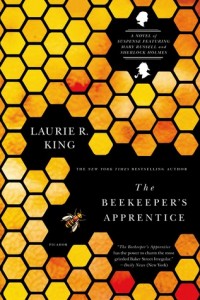 Escape Rating A: I have been following the adventures of Mary Russell and her husband Sherlock Holmes from the very beginning of this series, back in 1994 with
Escape Rating A: I have been following the adventures of Mary Russell and her husband Sherlock Holmes from the very beginning of this series, back in 1994 with 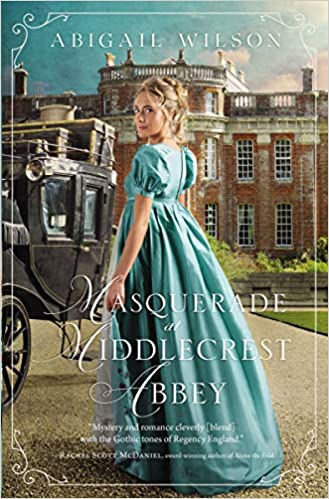 Masquerade at Middlecrest Abbey by
Masquerade at Middlecrest Abbey by 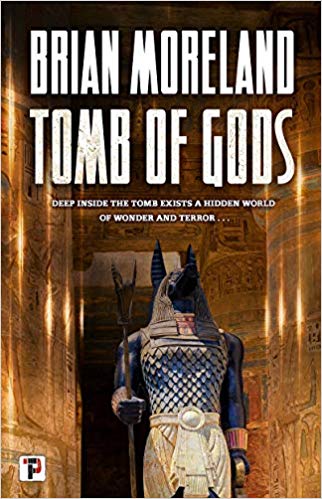 Tomb of Gods by
Tomb of Gods by 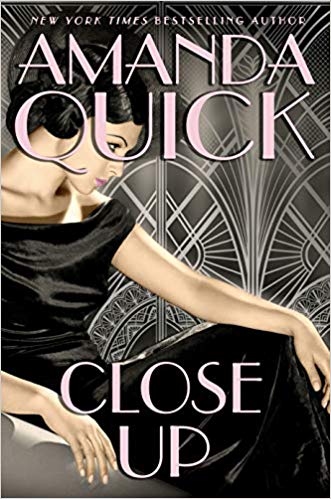 Close Up (Burning Cove #4) by
Close Up (Burning Cove #4) by 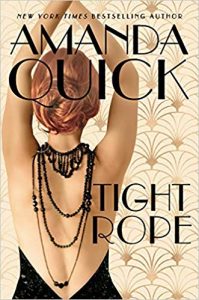 Close Up is the enchanting follow up to
Close Up is the enchanting follow up to 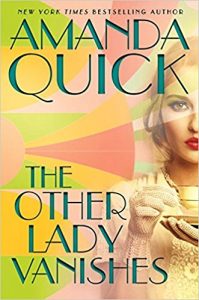 And on top of it all, there’s a romance. I’ll admit that, like an earlier book in this series,
And on top of it all, there’s a romance. I’ll admit that, like an earlier book in this series,